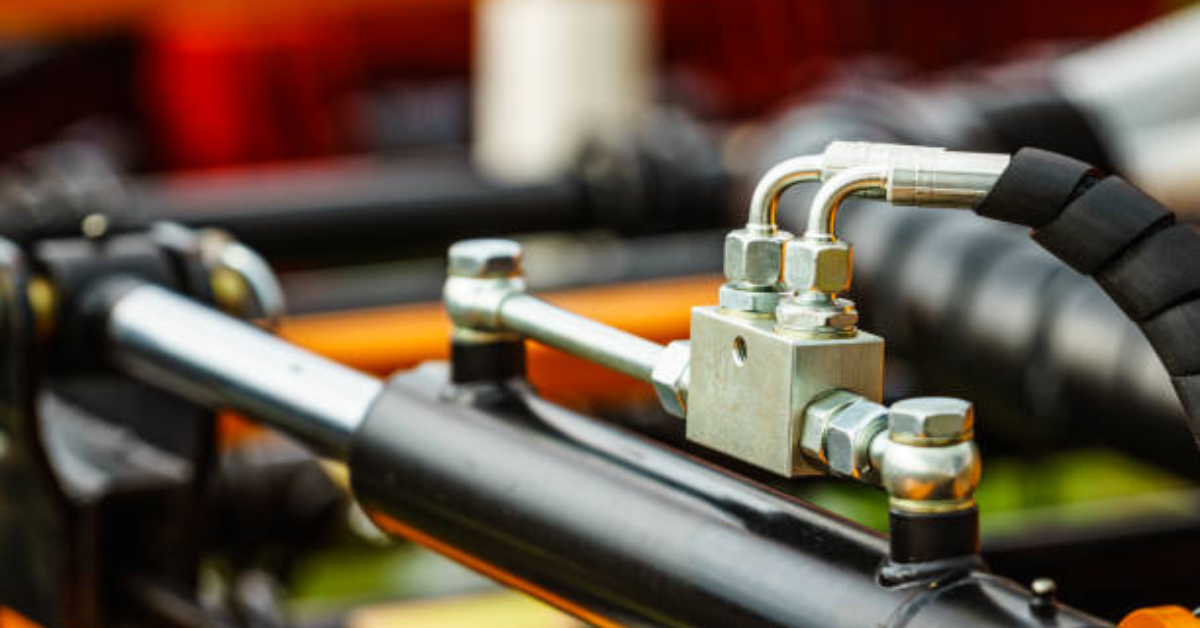Fluid Power: Harnessing the Potential of Hydraulic Cylinders Across Industries
In the realm of modern engineering and industrial applications, hydraulic systems stand tall as one of the most versatile and efficient means of power transmission. At the heart of these systems lie hydraulic cylinders, often considered the workhorses that translate fluid power into mechanical force.
Their applications span across a myriad of industries, from construction and manufacturing to aerospace and agriculture. In this blog post, we delve into the intricacies of hydraulic cylinders, exploring their functionality, diverse applications, and the pivotal role they play in powering various sectors.
Understanding Hydraulic Cylinders:
Hydraulic cylinders, crafted through OD grinding, serve as mechanical actuators harnessing the force of pressurized hydraulic fluid to produce linear motion and force. Comprising a cylindrical barrel, a piston, and hydraulic fluid, these cylinders function by pumping hydraulic fluid into one side, exerting pressure against the piston, thereby prompting movement in the intended direction. This motion converts into mechanical force, facilitating various tasks including lifting heavy loads, maneuvering objects, and regulating machinery operations.
Applications in Construction and Heavy Machinery:
One of the primary domains where hydraulic cylinders excel is in construction and heavy machinery. From excavators and bulldozers to cranes and forklifts, hydraulic cylinders are integral components that enable these machines to perform tasks with precision and efficiency.
For example, in excavators, hydraulic cylinders power the boom, arm, and bucket movements, allowing operators to dig trenches, load materials, and maneuver with ease. Similarly, in hydraulic presses used for metalworking and fabrication, hydraulic cylinders apply immense force to bend, stamp, and shape metal sheets with precision.
Industrial Automation and Manufacturing:
In the realm of industrial automation and manufacturing, hydraulic cylinders play a crucial role in powering various types of machinery and equipment. Robotic arms, assembly lines, and material handling systems rely on hydraulic cylinders for precise motion control and force generation.
Whether it’s welding components together, packaging products, or handling heavy payloads, hydraulic cylinders ensure smooth and efficient operation, contributing to increased productivity and cost-effectiveness in manufacturing processes.
Aerospace and Aviation:
The aerospace and aviation industries demand high-performance solutions that can withstand extreme conditions while delivering exceptional reliability. Hydraulic cylinders find extensive use in aircraft systems, including landing gear mechanisms, flight control surfaces, and cargo handling equipment.
In aircraft landing gear, hydraulic cylinders absorb the impact forces during takeoff and landing, providing stability and safety to the aircraft. Moreover, hydraulic actuators are employed in flight control systems to precisely adjust the position of control surfaces, ensuring maneuverability and stability during flight.
Agriculture and Farming Equipment:
In the agricultural sector, where efficiency and reliability are paramount, hydraulic cylinders play a vital role in powering farming equipment and machinery. Tractors, harvesters, and irrigation systems utilize hydraulic cylinders for tasks such as lifting heavy implements, adjusting equipment height and angle, and controlling hydraulic attachments.
Whether it’s plowing fields, harvesting crops, or irrigating farmland, hydraulic cylinders enable farmers to accomplish tasks with precision and efficiency, ultimately contributing to increased yields and profitability.
Automotive and Transportation:
Hydraulic cylinders find applications in various automotive and transportation systems, ranging from commercial vehicles and buses to passenger cars and motorcycles. In automotive suspension systems, hydraulic cylinders help dampen shocks and vibrations, providing a smooth and comfortable ride for passengers.
Additionally, hydraulic braking systems rely on cylinders to transmit hydraulic pressure from the brake pedal to the brake calipers, enabling efficient braking performance and vehicle control.
In Conclusion
From construction sites to manufacturing plants, from airports to farmlands, hydraulic cylinders are ubiquitous in powering a diverse array of industrial applications. Their ability to convert fluid power into mechanical force makes them indispensable components in machinery and equipment across industries.
As technology continues to evolve, hydraulic systems and cylinders will likely undergo further advancements, enhancing efficiency, reliability, and sustainability in various sectors. In harnessing the potential of hydraulic cylinders, industries can achieve greater productivity, precision, and performance, driving progress and innovation in the modern world.





